Lego Therapy: How Play Can Heal People (+ Resources)
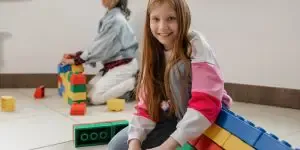 Connecting with others is more than just a pleasure; it’s a core human need.
Connecting with others is more than just a pleasure; it’s a core human need.
However, for an estimated 1 in 160 children worldwide with autism spectrum disorder (ASD), the skills that help us connect and collaborate may not come so easily (World Health Organization, 2021).
Lego Therapy is a powerful intervention designed to support children with ASD and communication challenges in developing skills in language and collaboration.
Once considered a mere toy, this world-famous construction system is now also being used by adults to overcome stress, pointing to the power of the humble Lego brick as a transformative tool for healing.
Before you continue, we thought you might like to download our three Positive CBT Exercises for free. These science-based exercises will provide you with detailed insight into Positive CBT and give you the tools to apply it in your therapy or coaching.
This Article Contains:
- What Is Lego Therapy & What Is It Used For?
- 5 Benefits & Research Findings
- How to Do Lego Therapy: Rules & Roles Explained
- 5 Activities, Games, & Ideas for Your Sessions
- Useful Assessment Sheets and Worksheets
- Training in Lego Therapy: 3 Courses & Online Options
- 4 Popular Books on the Topic
- Helpful Resources From PositivePsychology.com
- A Take-Home Message
- References
What Is Lego Therapy & What Is It Used For?
Lego Therapy is
“a child-led and peer-based intervention that builds upon the child’s interests in construction play to promote a willingness to
collaborate and interact.”
Songara, 2019, p. 2
The use of Lego as a therapeutic intervention was uncovered by accident by psychologist Daniel LeGoff (2004). His discovery came when he observed two of his socially withdrawn child patients playing together with Lego in his clinic’s waiting room, sparking the idea of developing an intervention involving the construction toys.
Today, Lego Therapy is used primarily with children to teach skills such as the following (Raising Children Network Australia, 2021):
- Turn taking
- Sharing
- Listening
- Conversation
- Teamwork
- Shared attention
- Problem-solving
Lego Therapy for autism
Today, Lego Therapy is used to support children with a range of communication and social-developmental challenges. However, when the practice first emerged, interventions initially centered on children with ASD (LeGoff, 2004).
Research has shown that Lego Therapy often taps into the natural interests and motivations of children with ASD, making it a highly effective form of therapy. In particular, it’s suggested that children with ASD are drawn to activities that involve systemizing and pattern prediction (Baron-Cohen, 2008).
Lego as a construction toy is predictable and systematic (i.e., the bricks always click together the same way), making it an ideal vehicle to deliver therapeutic interventions for children with ASD. Likewise, the three roles assigned to children as part of a Lego Therapy intervention (discussed in more detail below) serve to further systematize the process of collaboration.
Can Lego Therapy be used with adults?
Lego Therapy was designed for children between 6 and 16 years old (Raising Children Network Australia, 2021). However, while not yet part of a formal therapeutic methodology, Lego is increasingly being used among adult populations to encourage relaxation and mindfulness.
To illustrate, Lego has released a series of kits designed with nostalgia in mind, including the Central Perk cafe from the sitcom Friends and a vintage 1989 Batmobile. These sets are increasingly being picked by adults looking to unwind from high-stress jobs (Bhattarai, 2020).
While more research is needed, it’s believed that the singular focus required to follow building instructions while keeping your hands occupied can help to encourage states of mindfulness beneficial in reducing stress.
Using Lego interventions for anxiety
Lego Therapy has been effective at reducing anxiety in populations of children with ASD. To illustrate, let’s delve further into LeGoff’s (2004) discovery of Lego Therapy.
Upon realizing Lego’s effectiveness in encouraging children with ASD to play together, LeGoff created a therapy group called the Lego Club.
As numbers grew, it became clear that while the club was not so suitable for children with behavior disorders such as attention-deficit/hyperactivity disorder or oppositional defiant disorder, the treatment was particularly well suited to those with anxiety:
“Children with anxiety disorders (especially social phobia), depression, or adjustment difficulties manifesting as depression or anxiety, fit very well in the group, and many of them continued to attend as my ‘helpers,’ long after their presenting problems were resolved.”
LeGoff, 2004, p. 560
While more research is needed to determine the reasons for these differential effects, induced states of mindfulness and the reduced uncertainty flowing from clearly defined roles and a highly structured play system appear to be avenues for further investigation.
5 Benefits & Research Findings
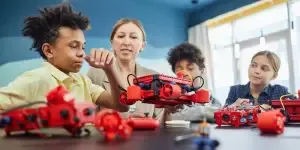
- Significant reduction in maladaptive behaviors including tantrums, avoidance of responsibility, physical aggression, and bedwetting (Owens, Granader, Humphrey, & Baron-Cohen, 2008)
- Easing of the anxiety felt by preschool-aged children because of hospitalization (Solihat, 2020)
- Increased social confidence and independence of primary-aged children with social communication difficulties (Boyne, 2014)
- Greater willingness to initiate social interactions, such as asking another child questions (Barakova, Bajracharya, Willemsen, Lourens, & Huskens, 2015)
- Parents whose children took part in Lego Therapy clubs frequently reported their child had made new friends with others in attendance (Evans, Sanders, & Knight, 2014)
How to Do Lego Therapy: Rules & Roles Explained
Lego Therapy is delivered in 30-minute sessions. Typically, these are held once per week, with three children taking part in each session.
At each session, children take turns filling one of three roles (Songara, 2019):
- Engineer — Uses plans to describe a construction and the bricks needed to build it
- Supplier — Identifies the bricks described by the Engineer and hands them to the Builder
- Builder — Uses the verbal instructions from the Engineer to assemble the construction
Given that each child has a clear role, Lego Therapy groups can help children comprehend and gain verbal and nonverbal communication skills in a patterned, systematic way that is analogous to interactions in daily life (Bodrova & Leong, 2003).
Further, as children move through the three roles, they gain skills in joint problem-solving, joint creativity, and joint attention (LeGoff, Krauss, & Levin, 2010).
5 Activities, Games, & Ideas for Your Sessions
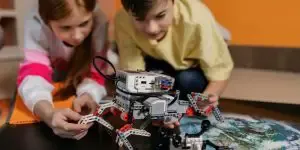
However, many therapists have discovered that using the bricks for one-on-one sessions with children clients can also be beneficial.
Here are three ideas from clinical social worker Mary Anne Peabody (2021):
- Self-expression and symbolism
With Lego bricks, children have the freedom to create anything they can imagine. Try inviting a child to build a structure that represents a domain in their life (e.g., the classroom, their home).
Next, invite the child to add to their creations using miniatures or natural items like rocks or leaves as symbols indicative of thoughts, experiences, or feelings.
- Creative problem-solving
Lego provides opportunities for therapists to teach creativity and problem-solving. Using Lego, try inviting a child to generate many creative possibilities regarding their constructions (divergent thinking).
Once they start building, work with them to diagnose and resolve problems, such as an unsteady construction or shortage of a particular brick (convergent thinking).
- Beat the Clock
Building a model and successfully following it through to completion is an opportunity to teach self-regulation and impulse control. One game for this is called Beat the Clock (Kaduson, 1997).
To play, begin by giving a child a stack of 10 poker chips and a plan to construct. Then, take one chip away each time the child engages in distractible behavior while building and award a chip each time the child stays focused on their construction for a specified amount of time. The child can then redeem the chips for prizes at the end of the session.
A look at group Lego Therapy
Let’s now return to Lego Therapy with groups and consider two more activities you might facilitate with your clients:
- Family play therapy
Invite families to build models based on a prompt chosen by the therapist (e.g., household chores, the holidays).
Once everyone has built a model, invite each person to tell a story about their model and then invite others to ask questions.
- Building a shared model
Have each member build a model based on the prompt. Next, have each person identify what they feel is the most essential component of their model by marking it with a red brick. Group members then take turns describing why they selected a particular component as important.
Finally, group members can then combine these components into a single shared model. For instance, you might use this activity with a newly formed Lego group to determine a common set of rules or expectations, or you could use it with a group of family members to represent a shared understanding in a household dynamic.
Useful Assessment Sheets and Worksheets
Here are useful free worksheets and exercises you can pair with a Lego Therapy intervention to help maximize the learning your young clients gain from the session:
- Validating Your Child’s Opposite Selves
This worksheet helps children discover that it is normal to experience conflicting thoughts and emotions. Consider combining this exercise with a Lego intervention that invites children to build and possibly combine different representations of their experiences, such as a happy versus a sad day. - Kids’ Reward Coupons
This worksheet features eight coupons you can award when children show positive behaviors. Consider awarding these as prizes for successful efforts in the Beat the Clock exercise above. - Self-Control Spotting
This worksheet invites children to sort eight behaviors that are either reflective or not reflective of self-control into two corresponding columns. Consider inviting children to complete this worksheet following a Lego Therapy intervention that requires self-control, such as Beat the Clock, to help transfer the lessons from the session into their daily behaviors.
Training in Lego Therapy: 3 Courses & Online Options
Looking to expand your skill set and become a Lego Therapy practitioner? Consider the following three training options:
Brick by Brick Academy Lego®-based therapy online training
The Brick by Brick Academy’s 10-week training program is designed for those who work to support children’s development of speech, language, communication, and social skills.
In particular, the program is targeted at therapists (particularly speech therapists), social workers, counselors, psychologists, teachers, and more.
The program is entirely online, can be undertaken from anywhere in the world, and includes 39 short videos and over 150 PDFs to support your learning. The training also offers a certificate upon completion, as well as continuing education credits.
To learn more, check out the Brick by Brick Academy website.
The Little Black Duck Lego Therapy – Facilitator Training
Targeted at parents and therapists, The Little Black Duck’s four-week training program offers a comprehensive introduction to Lego Therapy as it relates to ASD.
The program is entirely online and includes seven hours of group-based training as well as three hours of one-to-one time with the program facilitator. The course includes a breakdown of the different roles involved in Lego Therapy, the science evidencing the effectiveness of Lego Therapy for supporting children with ASD, and ideas for providing ongoing development and support following your sessions.
To learn more and register your interest, visit The Little Black Duck website.
Build2Talk
Build2Talk’s 100%-online program is designed for parents looking to support children with learning disabilities or ASD to develop cognitive, visual, language, fine motor, and social skills.
This course features several training videos and plans to build more than 20 unique models. It includes everything a parent needs to teach many of the skills taught by Lego therapists to their own children. Further, the course offers a certificate upon completion and access to a parents’ support group to keep in touch with the Build2Talk community.
Check out the curriculum and view a free preview of the course on Build2Talk’s website.
4 Popular Books on the Topic
For more reading to support your Lego therapy interventions, check out the following books, available on Amazon.
1. LEGO®-Based Therapy – Daniel LeGoff
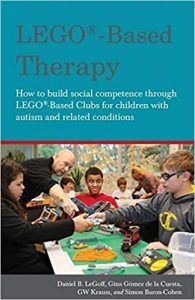
This guide outlines the theory underlying Lego Therapy as well as practical guidelines about space, behavior management, and evaluation of an intervention’s success.
Find the book on Amazon.
2. Thera-Build® With LEGO® – Alyson Thomsen
This user-friendly guide is an easy-to-read resource for practitioners looking to facilitate therapy interventions using Lego.
Suitable for both experienced clinicians and other professionals, this book gives you the tools to help build a child’s resilience and wellbeing and includes real-life case studies of children who’ve seen success from the method.
Find the book on Amazon.
3. How LEGO-Based Therapy for Autism Works – Daniel LeGoff
This book combines science and case studies to trace the history of Lego Therapy for supporting the skill development of children with ASD.
Drawing on LeGoff’s and colleagues’ work, it offers clinical insights and highlights best-practice approaches you can use to enhance your facilitation of Lego Therapy sessions.
Find the book on Amazon.
4. Building Language Using LEGO Bricks – Dawn Ralph and Jacqui Rochester
This practical manual walks through the Building Language Using LEGO® Bricks approach to conducting Lego Therapy, which involves two children working together to build a model to facilitate language and social communication skills.
Additionally, this manual includes bonus downloadable resources to help chart a child’s progress in the areas of expressive language, conceptual understanding, attention, and social communication.
Find the book on Amazon.
Helpful Resources From PositivePsychology.com
For more reading to complement your work with children, check out the following articles from around our site.
- 50 Play Therapy Techniques, Toys, and Certification Opportunities by Joaquín Selva
This article explores the applications of play therapy for supporting children with ASD, anxiety, trauma, and more. It includes ideas for play therapy involving not only blocks, but also using crafts, movement, and games. - Child Therapy: 19 Counseling Techniques & Worksheets for Kids by Courtney E. Ackerman
This article provides an in-depth overview of the science and practice of child therapy. In particular, it includes 13 useful worksheets and printouts covering themes ranging from bullying to gratitude. - School-Based Occupational Therapy Activities & Interventions by Tiffany Sauber Millacci
This article explores interventions, resources, and activities for occupational therapists working in schools. These activities target a range of areas for development, including hand–eye coordination, cognitive abilities, and social-emotional skills.
A Take-Home Message
Tapping into a child’s natural desire to play can be a great way to encourage learning and growth. And for some kids, the benefits of learning through play will be especially pronounced, helping them achieve developmental milestones that may not otherwise have been so easily within reach.
In this article, we’ve explored the power of Lego Therapy to help kids reach their potential, but the learning doesn’t stop there.
Lego is just one of many tools at your disposal for better parenting or to facilitate therapeutic interventions with children. If this post has sparked your imagination, consider reading more about the broader field of play therapy or registering for one of our recommended training courses to learn more.
We hope you enjoyed reading this article. For more information, don’t forget to download our three Positive CBT Exercises for free.
- Barakova, E. I., Bajracharya, P., Willemsen, M., Lourens, T., & Huskens, B. (2015). Long-term LEGO therapy with humanoid robot for children with ASD. Expert Systems, 32(6), 698–709.
- Baron-Cohen, S. (2008). Autism, hypersystemizing, and truth. Quarterly Journal of Experimental Psychology, 61(1), 64–75.
- Bhattarai, A. (2020, January 16). Lego sets its sights on a growing market: Stressed-out adults. The Washington Post. Retrieved from https://www.washingtonpost.com/business/2020/01/16/legos-toys-for-stressed-adults/
- Bodrova, E., & Leong, D. J. (2003). Building language and literacy through play. Early Childhood Today, 18(2), 34–42.
- Boyne, S. E. (2014). An evaluation of the ‘LEGO® Therapy’ intervention used to support children with social communication difficulties in their mainstream classroom (Doctoral dissertation). University of Nottingham, UK.
- Evans, C., Sanders, D., & Knight, R. (2014). Lego therapy club for children with high functioning autism and Asperger’s syndrome. Clinical Psychology Forum, 262, 18–21.
- Kaduson, H. (1997). Beat the clock technique. In H. G. Kaduson & C. E. Schaefer (Eds.), 101 Favorite play therapy techniques (pp. 139–141). Jason Aronson.
- LeGoff, D. B. (2004). Use of LEGO© as a therapeutic medium for improving social competence. Journal of Autism and Developmental Disorders, 34(5), 557–571.
- LeGoff, D. B. (2014). LEGO-based therapy: How to build social competence through Lego clubs for children with autism and related conditions. Jessica Kingsley.
- LeGoff, D. B. (2017). How LEGO-based therapy for autism works. Jessica Kingsley.
- LeGoff, D. B., Krauss, G. W., & Levin, S. A. (2010). LEGO®-based play therapy for autistic spectrum children. In A. A. Drewes & C. E. Schaefer (Eds.), School-based play therapy (pp. 221–235). John Wiley & Sons.
- Owens, G., Granader, Y., Humphrey, A., & Baron-Cohen, S. (2008). LEGO® therapy and the social use of language programme: An evaluation of two social skills interventions for children with high functioning autism and Asperger syndrome. Journal of Autism and Developmental Disorders, 38(10), 1944–1957.
- Peabody, M. A. (2021). Block play. H. G. Kaduson & C. E. Schaefer (Eds.), Play therapy with children: Modalities for change (pp. 39–53). American Psychological Association.
- Raising Children Network Australia. (2021, April 15). Lego® therapy. Retrieved from https://raisingchildren.net.au/autism/therapies-guide/lego-therapy
- Ralph, D., & Rochester, J. (2016). Building language using LEGO bricks. Jessica Kingsley.
- Solihat, L. L. (2020). Literature review: Therapy playing Lego as a method of anxiety reduction. Jurnal Berita Ilmu Keperawatan, 13(2), 122–125.
- Songara, J. (2019). How effective is the ‘Lego® Therapy’ intervention to support children aged 5–16 with an autistic spectrum disorder with their social communication difficulties in school? Retrieved from https://www.ucl.ac.uk/educational-psychology/resources/CS1Songara16-19.pdf
- Thomsen, A. (2018). Thera-Build with LEGO: A playful therapeutic approach for promoting emotional well-being in children. Jessica Kingsley.
- World Health Organization. (2021, June 1). Autism spectrum disorders [Fact sheet]. Retrieved from https://www.who.int/news-room/fact-sheets/detail/autism-spectrum-disorders
Let us know your thoughts
Read other articles by their category
- Body & Brain (42)
- Coaching & Application (54)
- Compassion (26)
- Counseling (50)
- Emotional Intelligence (24)
- Gratitude (18)
- Grief & Bereavement (21)
- Happiness & SWB (39)
- Meaning & Values (25)
- Meditation (20)
- Mindfulness (44)
- Motivation & Goals (43)
- Optimism & Mindset (32)
- Positive CBT (25)
- Positive Communication (20)
- Positive Education (44)
- Positive Emotions (30)
- Positive Leadership (13)
- Positive Psychology (32)
- Positive Workplace (33)
- Productivity (16)
- Relationships (41)
- Resilience & Coping (34)
- Self Awareness (20)
- Self Esteem (36)
- Software & Apps (13)
- Strengths & Virtues (30)
- Stress & Burnout Prevention (33)
- Theory & Books (44)
- Therapy Exercises (35)
- Types of Therapy (58)

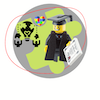

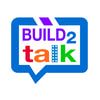

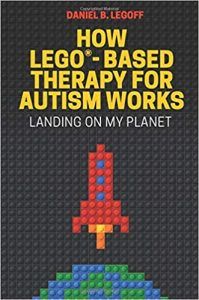
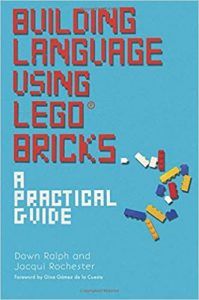



What our readers think
I have long been an advocate of Lego as a therapeutic tool. I have run clubs when I was a secondary school teacher and the collaboration and intense thought processing has helped many of my students. I am now working at a FE college and need to introduce one here too.
Another old school ‘toy’ that has many MH benefits is Scalextrix. Students lose themselves in the prep and racing, and its just great fun.
I really feel like these articles are written by AI.
Un interesante su aporte a nuestros usos
I am writing a marketing paper for my university about how LEGO Brands should campaign a line dedicated to special needs. This information has been beneficial for my research. Thank You.
Happy to help, Sarah!
– Nicole | Community Manager